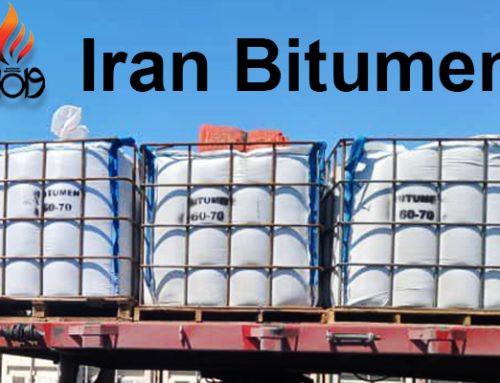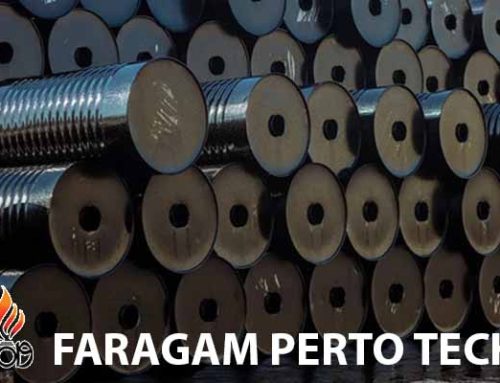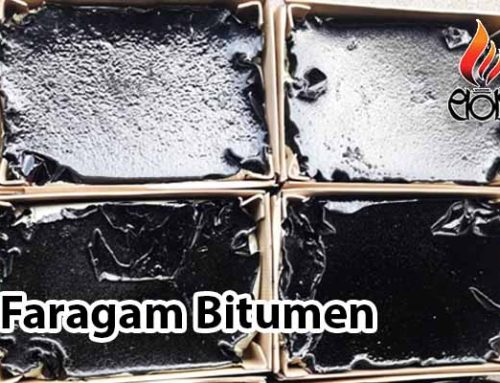
Bitumen Production Process
Bitumen production process is a refinery method which crude oil is placed at ambient pressure and at a temperature of 300 to 350 degrees to separate its light components such as gasoline and kerosene. In contrast, the heavy components of oil, which are bitumen, lubricating oils, etc., are discharged from the bottom of the tower because they are composed of hydrocarbons with a high molecular mass.
To separate these heavy components, temperatures above 400 degrees Celsius are used; because high temperatures break molecules and cause their thermal destruction. As a result, to prevent this, the pressure inside the tower must be reduced. The residue of the atmospheric distillation tower is heated from 400 to 350 degrees Celsius in a furnace and later enters the vacuum distillation tower.
Then, in the process of passing water vapor, light volatile materials are separated and purified in disturbed columns. Finally, non-volatile materials, the main part of which is bitumen, are removed from the bottom of the column.
Bitumen production process in refinery
After the oil and fuel materials are separated under vacuum conditions in the bitumen production process, the residue from the vacuum tower first enters the oil making unit and then enters the Visbraker unit to produce oil, fuel oil, etc.
Finally, these materials enter the bitumen production unit. In the bitumen production unit, aeration and oxidation operations are carried out inside the reactor using Conventional and Biturox methods based on temperature changes and aeration rates, converting them into various bitumen grades.
In general, two main processes are used to produce bitumen, which we will examine in the following:
1. Discontinuous or intermittent process
In the intermittent bitumen production process, the distillation tower must first be filled with bitumen to the desired level. Then, by circulating the bitumen between the furnace and the tower, preheating will be achieved. Direct heating by a fire tube in the tower can affect the quality of the product and reduce it. When the bitumen temperature reaches 190 to 240 degrees, complete aeration should begin.
At this time, the heat from the reaction can raise the bitumen temperature to 260 degrees. Also, the blowing time can vary from 3 to 24 hours. Just as at the beginning of the process, to prevent foaming, water should not be sprayed into the container, and during cooling, when the temperature drops below 200 degrees, water should not be injected into the container.
- The discontinuous aeration unit consists of various components, including:
- Oxidizer Tower Pre-heater
- A system for collecting and burning vapors
- Blower or Compressor
2. Continuous process
A continuous bitumen production process is similar to a batch process, except that whenever the blown bitumen specifications reach the desired level, fresh feed is continuously and continuously fed into the product with flow control. It is finally discharged by a height controller.
It is important to note that the fresh feed is fed in at a temperature lower than the operating temperature and is heated by the heat generated by the bitumen blowing reaction in the tower. Temperature control is achieved by preheating the feed in a furnace or heat exchanger, using methods such as water injection.
Among the most important advantages of the continuous process in bitumen production can be summarized as follows:
- Easier bitumen production
- Reduced equipment and maintenance costs
- Significant reduction in the amount of polluting vapors
- Increased efficiency and production volume per unit of time
- Reduced thermal load on feed pre-heaters
- Reduced aeration time and reduced air consumption
Process Variables and Potential Problems
The bitumen production process can be affected by various variables and factors, the most important of which are:
- Bitumen height
- Temperature
- Feed composition
- Aeration intensity
- Aeration duration
Of course, at this time, problems may arise:
- Final return
- Formation of coke
- Explosion of gases and vapors
- Cooling of the pipeline and its blockage
Ultimately, each of the problems mentioned can cause other problems, such as:
- Further softening of the bitumen
- Increased permeability
- Dilution of volatile substances
- Entrapment of associated oils
Factors Affecting Bitumen Production
In general, each bitumen production method can have several advantages and disadvantages; however, today, the continuous process is more considered compared to the discontinuous process due to the advantages it offers. Among the most important factors that can be effective in the bitumen production process can be summarized as follows: Thermal reaction control, by Cold Recycle
- Snuffing Steam injection into the tower to prevent fire
- Direct effect of the bitumen residence time inside the tower on its softness
- Decreasing or increasing the reaction rate under the influence of the amount of injected air and temperature
- Starting the operation at a temperature of 420 degrees Fahrenheit and increasing it with increasing temperature up to 550 degrees
- Better oxidation and reduction reaction if the temperature difference (Point 1) and temperature (Base) are high
- Increasing the aeration ratio in conditions where the temperature change ratio is constant causes an increase in temperature and decreasing it causes a decrease in temperature.
- Failure to reduce the stopping time if the liquid level is low, because contact between hot liquid and excess air released from between the liquid molecules leads to fire.
Final Conclusion
Bitumen is a practical material that is used in many industries today. Bitumen production process from crude oil can be carried out in different ways and in two different processes including continuous and discontinuous processes, and each of these processes can have its own advantages. Various factors such as temperature, aeration time, feed composition, aeration intensity, bitumen height, etc. can be effective in the bitumen production process and the quality of the final product.



